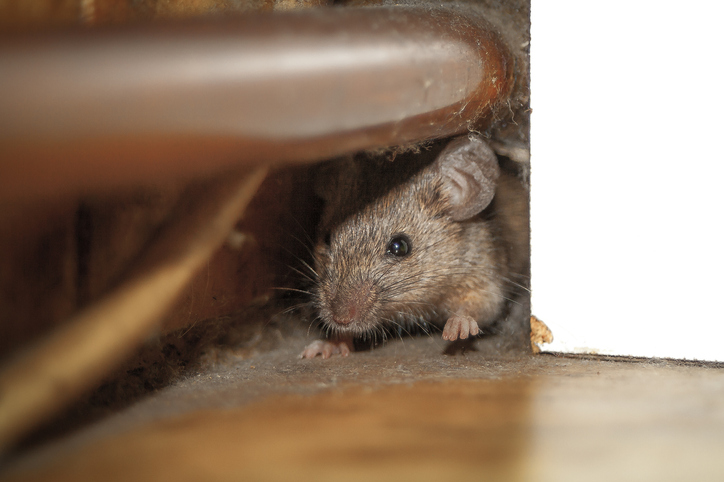As the leaves change colours and the air turns crisp, fall brings a sense of coziness to rental properties. However, it also heralds the arrival of pests seeking shelter from the cooling temperatures. As a rental manager, proactively preventing and addressing pest issues during this season is a crucial facet of rental management. See how you can implement effective fall pest control strategies to help maintain pest-free and happy rental properties.
Understanding the Seasonal Pest Challenge
Fall presents unique challenges for rental managers when it comes to pest control. As the weather cools, pests such as rodents, spiders, ants, and cockroaches seek refuge indoors. They often find their way into rental properties, leading to tenant dissatisfaction and property damage. Understanding the nature of these challenges is the first step in effective fall pest management.
- Rodents: Mice and rats are notorious for seeking warm and sheltered spaces as temperatures drop. They can squeeze through small openings and often go unnoticed until the infestation worsens.
- Spiders: Spiders are more active in the fall as they search for mates. Some spider species are harmless, but others, like the brown recluse or black widow, can pose health risks.
- Ants: As outdoor food sources dwindle, ants may invade rental properties for sustenance. Common kitchen ants can become a nuisance.
- Cockroaches: Cockroaches thrive in warm, humid environments and can quickly infest properties if not addressed promptly.
Preventing Fall Pest Infestations
Proactive pest prevention is the key to maintaining pest-free rental properties during the fall season. Here are effective strategies to consider:
- Seal Entry Points: Inspect the property for cracks, gaps, and openings that pests can use to gain entry. Seal these openings with caulk or weatherstripping.
- Regular Maintenance: Maintain the property’s exterior by trimming bushes and trees away from the building to prevent pests from using them as bridges. Also, ensure that gutters and downspouts are clear to prevent water accumulation that can attract pests.
- Screen Vents and Chimneys: Install screens over vents and chimney openings to prevent pests from entering through these pathways.
- Trash Management: Educate tenants on proper trash disposal and collection schedules. Overflowing trash cans can attract pests.
- Routine Inspections: Conduct routine inspections of rental properties inside and outside to identify pest activity early.
- Landscaping: Maintain landscaping by trimming grass, shrubs, and foliage to reduce hiding places for pests.
- Educate Tenants: Provide tenants with information on preventing pest infestations, including proper food storage and cleanliness.
Addressing Pest Infestations
Despite preventive measures, pest infestations can still occur. Rental managers must be prepared to address these issues promptly and effectively.
- Prompt Response: Respond to tenant reports of pests promptly. Delay can allow the infestation to spread.
- Professional Pest Control Services: The best approach is to conduct inspections and treatments with professional pest control services. They can identify the type of pest and implement appropriate measures.
- Tenant Cooperation: Encourage tenants to cooperate with pest control efforts by allowing access to their units for inspections and treatments.
- Regular Monitoring: After addressing an infestation, continue monitoring the property to ensure the problem has been completely resolved.
- Educate Tenants: Provide tenants with information on recognizing early signs of infestations and steps they can take to prevent them.
Seasonal Pest Control Maintenance
Incorporate seasonal pest control maintenance into your rental management routine to stay ahead of potential issues.
Early Fall
- Conduct a thorough property inspection to identify any existing pest issues or potential entry points for pests.
- Ensure that windows and doors have intact screens to prevent insects from entering.
- Schedule professional pest control services for preventive treatments.
Mid-Fall
- Monitor the property for signs of pest activity, especially in common problem areas like kitchens and bathrooms.
- Continue working with pest control professionals to address any issues that arise.
Late Fall
- As temperatures drop further, pests become more determined to find shelter. Be vigilant in monitoring the property for signs of infestations.
- Address any pest issues promptly to prevent them from establishing winter harborage.
Fall pest control in rental properties is a proactive effort that requires collaboration between rental managers, tenants, and pest control professionals. By implementing preventive measures, promptly addressing infestations, and incorporating seasonal pest control maintenance into your rental management routine, you can ensure that your properties remain pest-free and welcoming throughout the fall season. Don’t underestimate the importance of pest control in maintaining tenant satisfaction and property value. A well-managed, pest-free rental property is a sound investment and a comfortable and pleasant place for tenants to call home.

Recent Comments